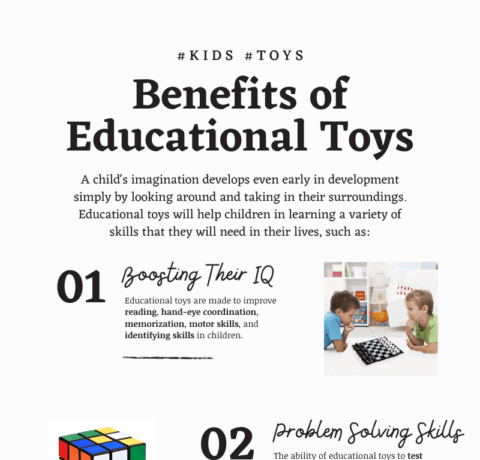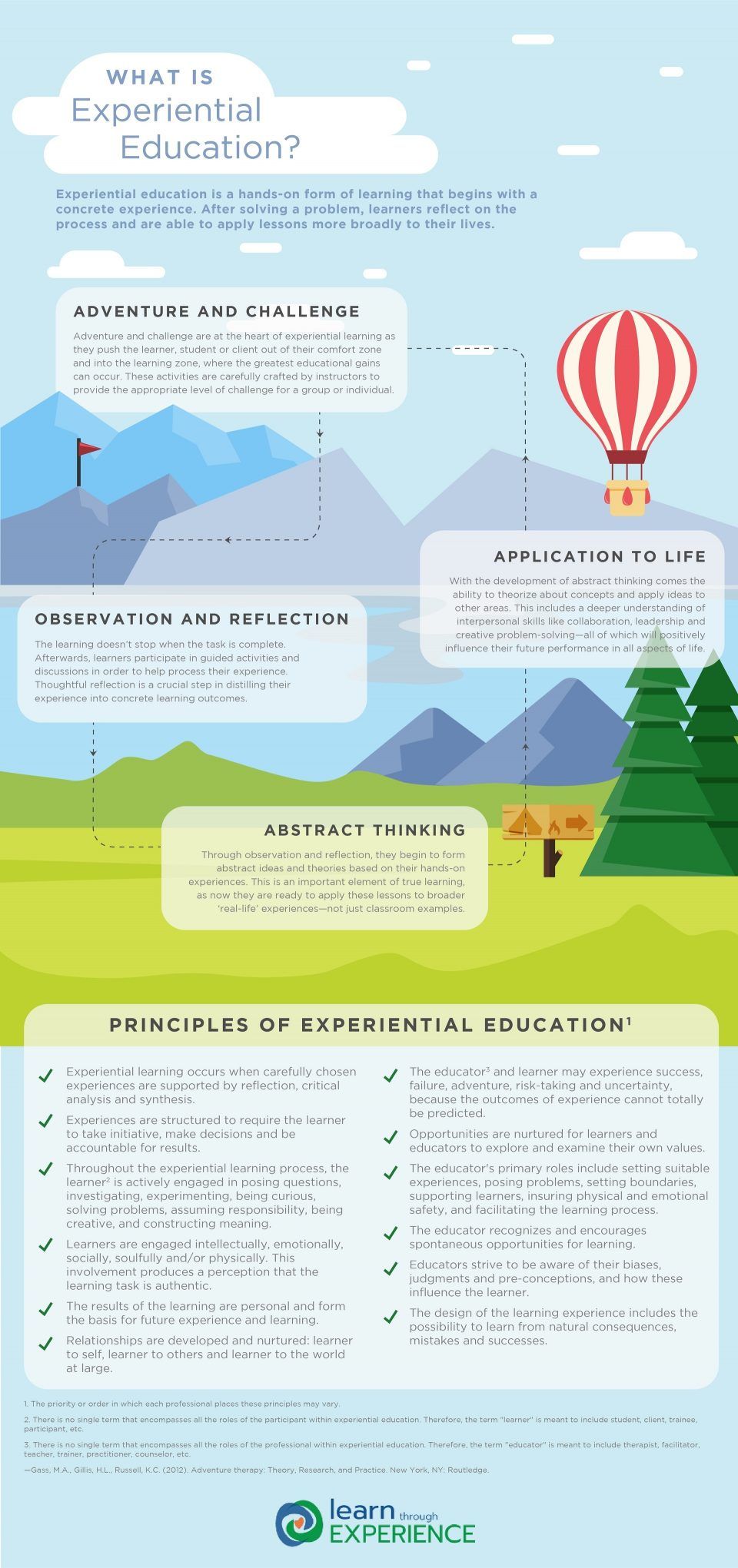What Is Experiential Education Infographic
By engaging in experiential learning, you can positively impact your life and the lives of those around you, while building confidence and character along the way.
A Look at Experiential Education
Understanding what experiential education is will be the first step of your journey. Simply put, experiential education is a way of framing the learning environment to focus on you, the learner. With experiential education, you become the lens through which all things are viewed. You take a pivotal role in shaping your learning environment, working either one-on-one or in groups to experience, problem-solve and analyze the ideas set before you.
As a broad methodology, experiential education doesn’t conform to just one type of learning or one type of environment. In fact, experiential learning is effective in nearly all facets of life. It is applicable at K12 schools, colleges and universities, summer camps, work retreats, mental health programs, employer training facilities, substance abuse/addiction centers and many other settings.
The most common types of experiential education programs revolve around wilderness therapy, adventure education, corporate development training and classroom-based learning (primary, secondary and higher education).
Four Stages of Experiential Learning
Educational theorist David A. Kolb is credited with developing the Educational Learning Theory model, first published in 1984. There are four stages of learning in this model, and each one builds upon the previous in a holistic, well-balanced manner. Here are the four stages you will encounter in experiential learning:
- Concrete Experience: In this first stage, the learner takes part in some type of activity, actively engaging with hands-on learning. It could be indoors, such as in a classroom or gymnasium, or it could be outdoors in an urban or rural setting. Regardless of the environment, the learner is encountering a new experience and actively absorbing new material.
- Reflective Observation: During the second stage, the learner has completed the activity and now takes time to reflect back on the experience. Critical thinking does not occur at this stage. Rather, it is a time for observing what lies before and around the learner as a result of the activity.
- Abstract Conceptualization: By the third stage, the learner has begun to think about the experience, to conceptualize a personal theory about what the experience meant or how it could be repeated (or modified).
- Active Experimentation: In the final stage, the learner once again dives into an activity, applying the conceptualized theory to determine if the outcome is similar or different to what was first experienced. The learner will make decisions and problem-solve to determine how the best outcome could be achieved.
Key Principles of Experiential Education
- Experiential education – the process used to achieve learning – involves several key principles that guide its overall approach.
- Active learning, when the learner shapes the educational course through questions, experiments and creative thinking. The learner develops curiosity in all materials, taking time to solve problems and put forth conceptualized outcomes.
- Learner initiative, when the onus is placed upon the learner for guiding the experience. It also means the learner takes responsibility for outcomes and will be held accountable for the successes and failures of each.
- Holistic focus, when the learner’s mental, physical, spiritual, emotional and social needs are taken into consideration.
- Personalized experience, when the learning results are unique to each learner. The personalized results will also guide future experiences and shape the way the learner chooses to engage with participants, educators and community members.
- Nurtured relationships, when the learner deepens a connection and learns to encourage reciprocal benefits. The most common relationships are between learner and self, learner and acquaintances/family, and learner and society as a whole.
- Joint value, when the learner and educator both gain from the experience. Some of this value focuses on the actual successes and failures, while other aspects focus on the degree of risk-taking and unknown outcomes.
- Safe learning environment, when the educator devises an experience in which the learner is able to question, problem-solve and learn in a safe, stimulating environment. The educator is responsible for presenting the initial experience, leaving the learner to take hold of the reins from that point forward.
- Unbiased approach, when the educator focuses solely on the learner and the learner’s perspective, refraining as much as humanly possible from personal biases, presumptions and judgments.
- Taken together, these principles help shape the experience for every learner and every educator in turn. Your journey is never one of isolation; rather, you’ll find it is a joint venture in which all parties benefit and work in tandem to enhance their own lives and sense of purpose.
See also: Experiential Learning in The Classroom Infographic







You can adjust your cookie preferences here.